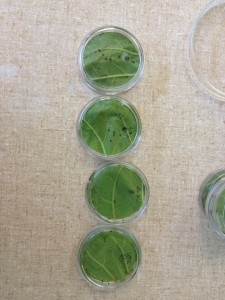Organic Tobacco Flea Beetle Management
go.ncsu.edu/readext?412524
en Español / em Português
El inglés es el idioma de control de esta página. En la medida en que haya algún conflicto entre la traducción al inglés y la traducción, el inglés prevalece.
Al hacer clic en el enlace de traducción se activa un servicio de traducción gratuito para convertir la página al español. Al igual que con cualquier traducción por Internet, la conversión no es sensible al contexto y puede que no traduzca el texto en su significado original. NC State Extension no garantiza la exactitud del texto traducido. Por favor, tenga en cuenta que algunas aplicaciones y/o servicios pueden no funcionar como se espera cuando se traducen.
Português
Inglês é o idioma de controle desta página. Na medida que haja algum conflito entre o texto original em Inglês e a tradução, o Inglês prevalece.
Ao clicar no link de tradução, um serviço gratuito de tradução será ativado para converter a página para o Português. Como em qualquer tradução pela internet, a conversão não é sensivel ao contexto e pode não ocorrer a tradução para o significado orginal. O serviço de Extensão da Carolina do Norte (NC State Extension) não garante a exatidão do texto traduzido. Por favor, observe que algumas funções ou serviços podem não funcionar como esperado após a tradução.
English
English is the controlling language of this page. To the extent there is any conflict between the English text and the translation, English controls.
Clicking on the translation link activates a free translation service to convert the page to Spanish. As with any Internet translation, the conversion is not context-sensitive and may not translate the text to its original meaning. NC State Extension does not guarantee the accuracy of the translated text. Please note that some applications and/or services may not function as expected when translated.
Collapse ▲In addition to questions about organic aphid management in tobacco, I have also received several questions about organic flea beetle management. Most of these questions have been some version of “What organically acceptable insecticides are effective against flea beetles?”
We have conducted a few efficacy trials comparing organically acceptable (OMRI listed) insecticides for tobacco flea beetle. Most of these have been conducted as laboratory or semi-field assays, where we expose field-collected beetles to leaves treated in lab or collected from the field. We use this method because getting reliable data on flea beetle mortality in field trials is difficult.

Tobacco flea beetle semi field bioassay. Field collected insects were exposed to leaves that had been treated with insecticides in the field. Photo: Hannah Burrack
As I mentioned in a post earlier this week, Arthropod Management Tests (AMTs), a journal published by the Entomological Society of America, is a great first source for pesticide efficacy data. In fact, this is where we published our organic insecticide flea beetle efficacy trial. In this experiment, we measured flea beetle mortality on leaves treated in the lab or in the field with Pyganic 1.4EC, GOS Neem Oil, EcoTec combined with TriTek, Aza-Direct, and Entrust (a standard material that is not registered on tobacco). In lab-only bioassays, all of these materials resulted in high flea beetle mortality.
Lab-only assays do not always approximate field applications. Pyganic 1.4EC, GOS Neem Oil, EcoTec combined with TriTek, and Aza-Direct are all very oily materials and caused contact mortality in the lab. However, when sprayed on plants in the field, these materials were less concentrated on plant surfaces, and only Pyganic and Entrust cause significant flea beetle mortality. For this reason, Pyganic is the only material we currently recommend for flea beetle control in organic tobacco. See our AMT for detailed data tables and experimental methods.
Another important caveat is that we only tested the highest labeled rate of Pyganic 1.4EC, and there is a very large labeled rate range (16-64 fl oz/acre). At the highest labeled rate, this is potentially a very costly application, so growers should be certain that is economically justifiable to treat flea beetles at all! They should carefully scout plants and make sure that beetles exceed the 4/plant threshold for early season populations. This threshold is based on beetle counts not beetle damage! These insecticides are only effective if the target pest is present on plants. A damaged plant does not necessarily mean the insect doing the damage is still present.
More information
Answering questions about organic aphid management in tobacco – Entomology Portal
Arthropod Management Tests – An open access source for insecticide efficacy data – Entomology Portal
Efficacy of organically acceptable pesticides against tobacco flea beetles, 2013 – Arthropod Management Tests
Scouting for tobacco flea beetles – Tobacco Growers Information Portal


